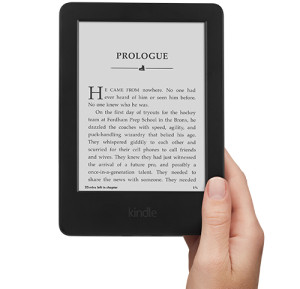How To Improve Your Reading Habits In 5 Steps
I’ve always found reading interesting. In fact, when I was in first grade, there were reading competitions every week in our class and I would win every one of them. I once read 100 books (little story-like ones, that is) in a week. After that, my teacher had to ask my mom to stop reading too much or at least stop declaring all the books I’ve read, because I was discouraging other kids in the class. Funny, I know!
Then comes the time I have my own computer, and suddenly I was never an avid reader as before. I was struggling to find the focus to read. I think I get it now: There is too much interesting stuff going in your computer and the web than there is in that old library with dusty books. I mean, can’t we read all the text on our computers, why bother touching those old dusty pages?
The truth is, computers made me lazier at reading and my reading habits were declining every single day. It’s true that information by nature is dynamic: Britannica can’t adapt the fast changing pace of Wikipedia. But these screens that are turning us into productivity machines, are actually causing us to read less.
Once I recognized this problem, I tried to solve it. It worked much better than I expected. I still have a long way to go, but I dramatically improved my reading habits in a couple weeks. Here I share some of them for my fellow citizens of the internet who most likely have the same problem.
1. Get An E-reader, Like Kindle

Having an e-reader like Kindle has several advantages. The most important one is that it’s easy on your eyes. If you try to read a long form article or a book on your computer or tablet, you will quickly find out that in about an hour, you will want to take a break because the no matter the brightness level, that screen light will tire your eyes quicker compared to reading a paper.
That’s where e-readers come in. Without compromising technological convenience of having all your books in a little device, it gives you a similar and even more pleasing reading experience. E-readers are designed to be easy on the eyes. Thanks to the e-ink technology, it feels like you’re interacting with a piece of paper but there is a magical computer behind it.
If you get a Kindle for example, all books are one-click away, you can start reading right away. You don’t have to go to a store or wait for several days for your books to be shipped. You can turn pages with one touch, and take notes and put bookmarks with a few click which doesn’t come as easy in real books!
So, having an e-reader was an important step in keeping me from making more excuses to not read. I had all my books in my pocket and they didn’t tire my eyes for a long time.
2. Don’t Miss Important Content You See On the Web

Often times, I read more articles on the web than I read books. Choosing a book to read can be a tough decision because of the fact that you will be investing your next few weeks or even months reading it. On the contrary, we see interesting articles on the web every day. Most of the time though, we are busy with other things and not end up reading the article we would like to and just skim it quickly.
Well, you don’t have to do that anymore. Applications like Pocket let you save your articles with one click so that you can read them later. And the good news is that it does this while scraping all distracting advertisements and content, just leaving you with your article, pure text and visuals. And voila, you can now read your articles in your computer, smartphone or tablet even when you’re offline.
When I’m on my daily commute or just have some free time anywhere, I pick up my phone and read some articles on my Pocket. Which makes reading really convenient for me.
An Added Benefit: Pocket to Kindle
If you use both Pocket and Kindle, check out the application I’ve built: P2K.co (Pocket to Kindle). It sends your Pocket articles to your Kindle e-reader. It can deliver articles daily, weekly or just once. It also has some amazing delivery options you can choose from:
- Deliver X latest articles
- Deliver some articles worth X minutes in total
- Deliver X random articles
3. Learn to Read Faster
The more you read, the more you realize you want to be able read and understand faster. Well, there are several ways to read faster.
Speed reading apps like Spritz do help, but since these types of apps create a virtual environment for reading, a box designed to let you focus on a certain point and read faster, they don’t work outside of that environment. After a week of Spritz, I won’t become a faster reader, because true speed reading doesn’t depend on environment. Not to mention these apps have all kinds of problems, like taking away your ability to glance back at a word which is crucial in understanding any text.
True speed reading is a mixture of eye movement skills and being able to see/understand multiple words at once. What you should do instead is to train yourself for speed reading, instead of using these apps which create artificial reading environments. Here are some tips I find useful:
1. Learn how to skim: Most of the well written text follows the structure of introduction and then details. At the end of the detail portion of the text, there is usually a summary of those ideas. So if you want to skim, say, an article comprised of 10 paragraphs, you have 1 intro paragraph which discusses the idea the text will be about. I usually don’t skim this part, read it as much as I can. Then 8 or 9 paragraphs about each single point. For all of those 8 or 9 paragraphs, I look at the first and the last sentences to get the idea.
2. Stop saying the words in your head as you read: Because, “When you say the words as you read them, you can’t read any faster than you can talk” – LifeHacker
3. Improve your ability to see/understand multiple words at once: You need to practice this. The more words you are able to see and understand at once, the faster you will read.
4. Improve your eye movement techniques: Try horizontal as much as vertical eye movements. Find out which movement slows you down and try to improve it. Remember, the fast reading speeds those apps claim to help you reach are mostly because of one fact: They take away eye movements – which is a huge negative component in the speed reading equation – and let you focus on one point to read faster.
4. Set Aside a Time to Read Every Day
Most of the times, we get busy during the day with a lot of things and we forget to read even though we’d like to. In such situations, you are struggling to make reading your routine. I found a solution that worked for me: Set aside a time to read every day.
I schedule to read at least an hour per day, for anything non-work related. In my P2K (Pocket to Kindle) application I’ve mentioned above, I can schedule to get articles totalling 60 minutes of reading time every day on my Kindle. That way, whenever I pick up my Kindle every day, I see a new item delivered to it, which contains enough content for my daily reading appetite.
5. Don’t Push Yourself
Last and the most important thing is to not push yourself. Forced readings don’t end up very well. If it did, all the people who graduate from college would have read all the material without even Googling any summaries!
1. Don’t force yourself to read if you are not enjoying the piece: Read something else. Read things that interest you instead. This is the only way you can improve your reading habits and make it your hobby.
2. Don’t push yourself to read only books: Books are great but they require a lot more investment of your time than any other form of reading, because they’re long. So instead, think reading as a medium for learning and entertainment. Read things that you can learn from or enjoy. If you add up all the words I’ve ever read until now, I’d say probably 10% were books, 90% were articles and everything else.
Also, think of audio books as a good alternative if you have a routine time like daily commutes to work or cooking where you can’t get 100% visual focus, but you can listen to someone speaking.
3. Don’t try to understand every word, understand the big picture: This of course depends on the type of text you’re reading, but sometimes we get obsessed over individual meanings rather than trying to understand the big picture. This applies both if you’re fluent or learning the language you’re reading in. It’s an important skill to read and understand fast.